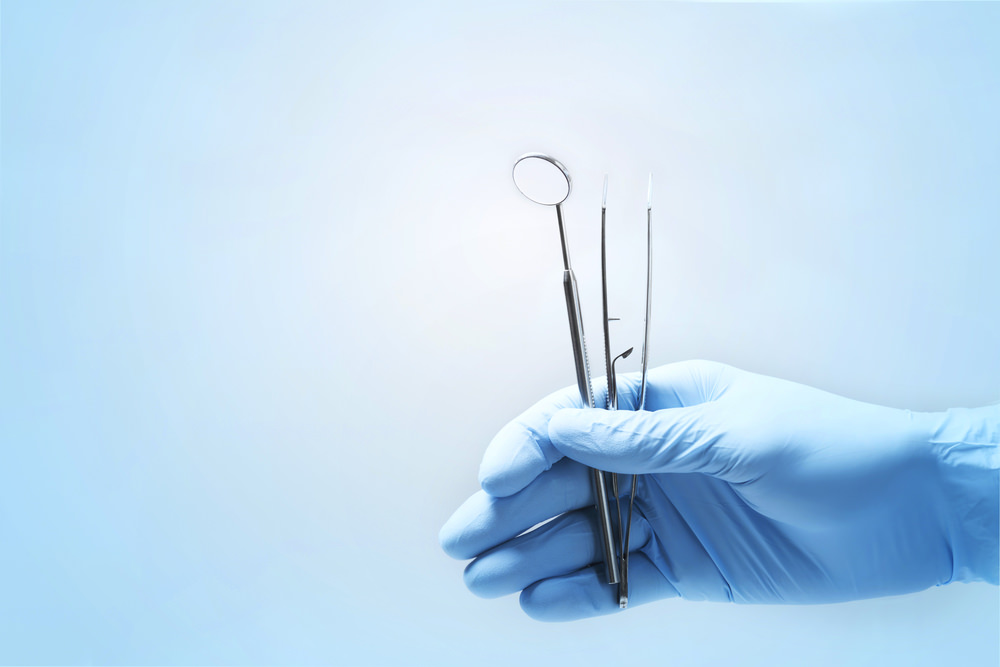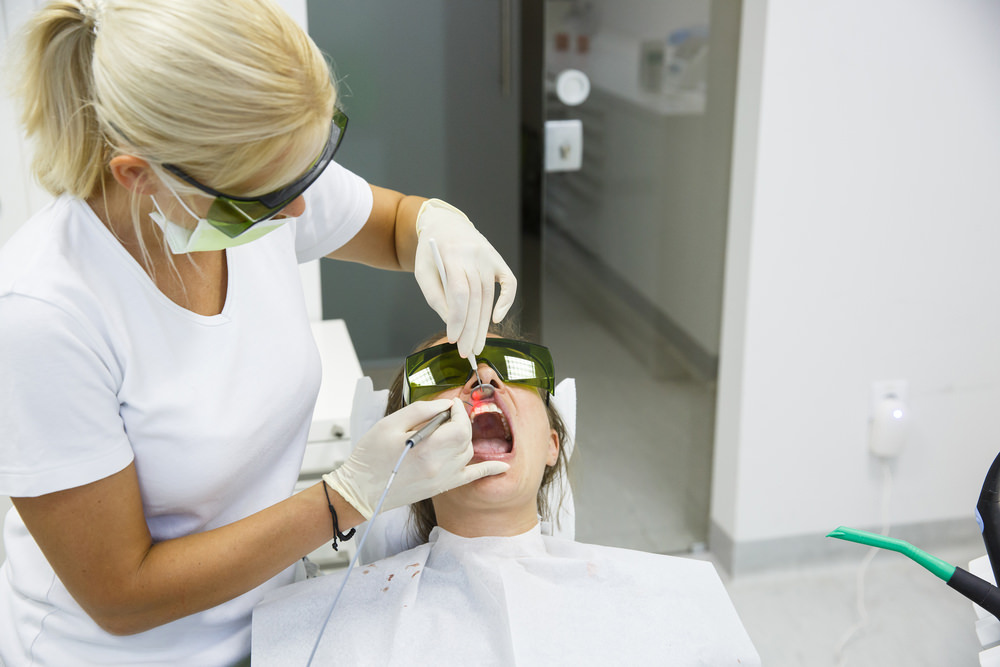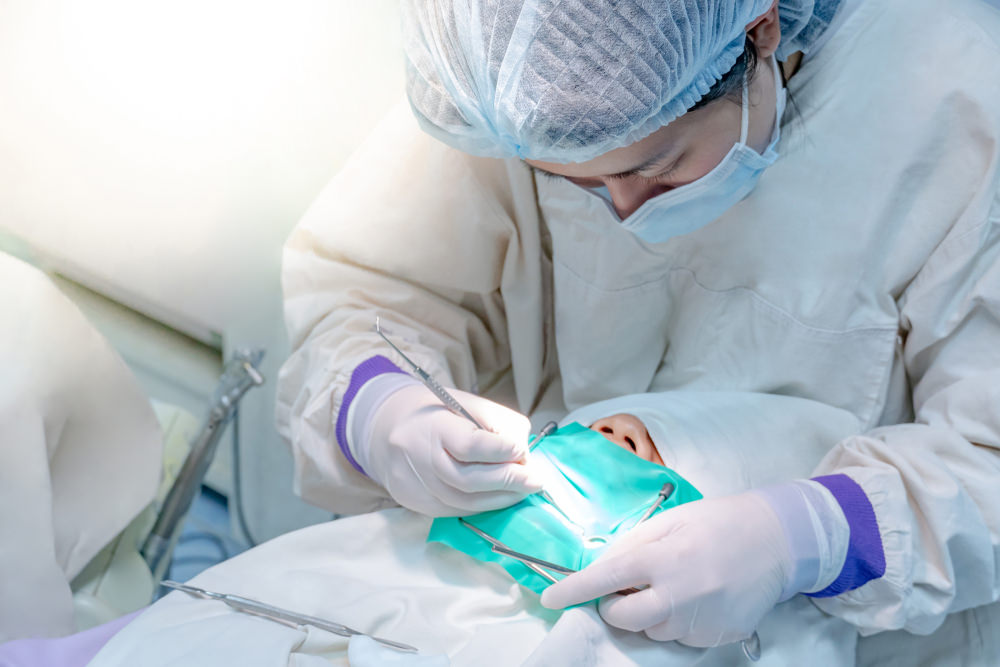7 Tools All Dentists Use & How They are Cleaned
Have you ever wondered – how many tools do dentists have?
The exact number is hard to come by, but there are many different tools available for dentists, each with a use of their own.
These tools are mainly categorised by their function, such as if they examine, manipulate, treat, restore, or remove teeth and their surrounding oral structures.
The first lesson that a dentist learns is not to call their “instruments” tools.
Everything that a dentist uses is called an Instrument.
A lot of people are scared of, or even avoid going to the dentist, because of these instruments.
Let’s get started, so you can become familiar with them.
Doing so will make you know what to expect, and help you feel more prepared for your dental visits.
Common List of Dental Instruments Used
I will list the most common dental instruments for you below, with a description of them, and why they are needed.
1. Mouth Mirror
A mouth mirror is one of the most popular dental instruments.
It consists of a little mirror attached to a metal stick. It doesn’t sound like much, but it’s important – it has a number of uses.
Firstly, it lets the dentist see areas of your mouth that would otherwise be hard to reach, such as the back of your molars and the inside of the top teeth.
So, the mirror makes it easier for them to find tooth decay or other possible dental problems that may have gone unnoticed.
Furthermore, it can light up the mouth, as the mirror reflects the light.
This assists with the examination.
The mirror also allows the dentist to move your tongue or push the inside of your cheek aside, without having to use their fingers.
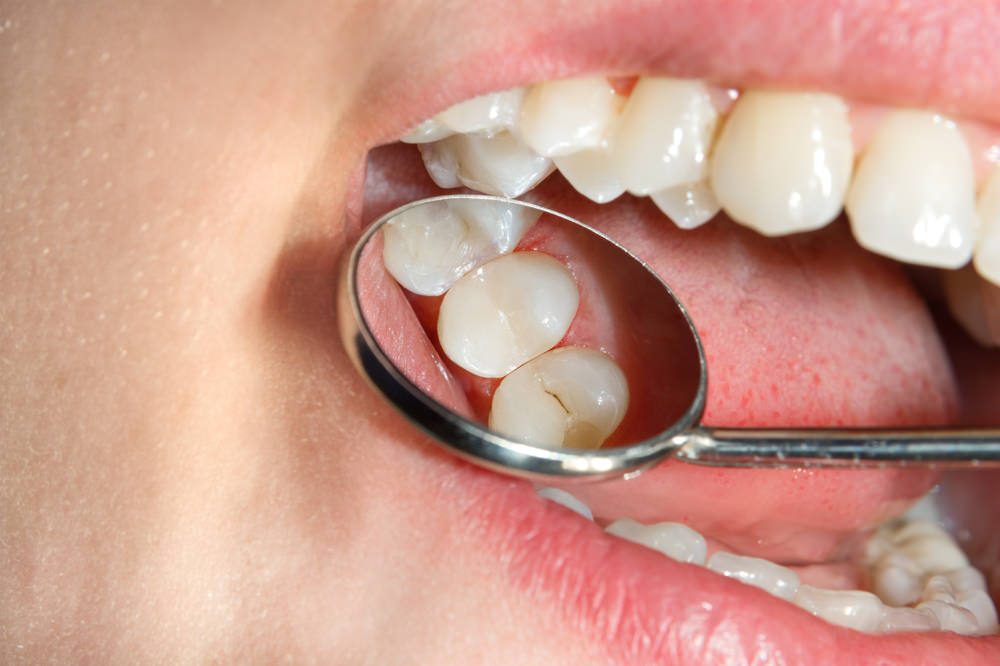
A mouth mirror used by your dentist.
2. Sickle Probe (also called the “Dental Explorer”)
Called a sickle probe as it is shaped like a sickle that is used to gather hay or grain in a field – that is, a long handle with a sharp hook on the end.
This may look scary and old-fashioned, but it’s helpful for finding symptoms of cavities or gum disease, so you‘ll find it in almost every dental clinic, in various lengths and thicknesses.
It’s mainly used to inspect the pockets between teeth, check the surface for defects or plaque, while at the same time scraping off tartar and plaque.
Your dentist may also use the sharp tip to examine any visible cavities.
All in all, it’s an instrument that is essential for preventative dentistry.
If the probe sticks in any nooks or crannies that is a sure sign of decay present.
So if the dentist scrapes the probe over the tooth surface it is because the dentist is looking to see if the probe gets caught in any cavities.
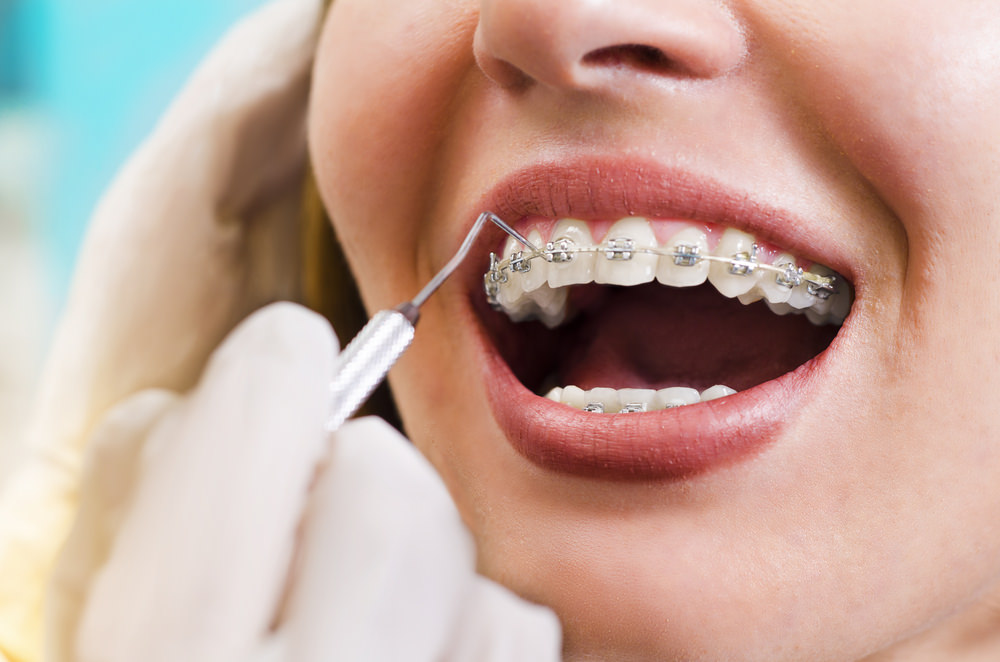
A sickle dental instrument – A very useful piece of kit for your dentist!
3. Scaler
While the sickle probe effectively removes small areas of plaque and tartar, a scaler is necessary to eradicate a larger build-up.
As you come to the dentist for a clean then the scaler is used to scrape soft and hard plaque build-up from the teeth and under the gums.
If the hardened plaque has stuck to the teeth under the gums then the sharp point of the scaler is used to dig up any hardened plaque stuck to the tooth surface.
Most patients undergo some form of plaque build-up, from what they eat or drink, and the bacteria that sticks to their teeth.
These, if not removed, will cause teeth to decay or the gum which should be connected to the teeth can become disconnected from the tooth root.
While brushing and flossing help get rid of most plaque, at times extra help with removal is needed before it can permanently damage your teeth.
A scaler helps with scraping this additional plaque.
It’s not exactly comfortable, but careful scraping using a scaler, which has a hook on the end like a sickle probe, will stop your teeth from decaying and keep your gum healthy and connected to the tooth root.
4. Saliva Ejector or Suction Device
The saliva ejector is the tool that removes saliva from your mouth while the dentist is working.
It has a long tube attached to a vacuum to do so.
You may have heard it sound like a vacuum cleaner, or felt it stick to your cheeks or tongue, but it’s nothing overly startling.
This is used when the dentist needs a dry surface when exploring your mouth.
So that water, saliva and debris don’t build up in your mouth, the suction device removes them.
This may also make you more comfortable while the procedure is performed.
During procedures that involve the use of water, you may feel the need to swallow.
This can be effective even with the suction tip in your mouth.
If the water builds up at the back of your throat it may feel uncomfortable but if you can relax the dental assistant can easily remove any excess water from your throat so that you don’t have to swallow it.
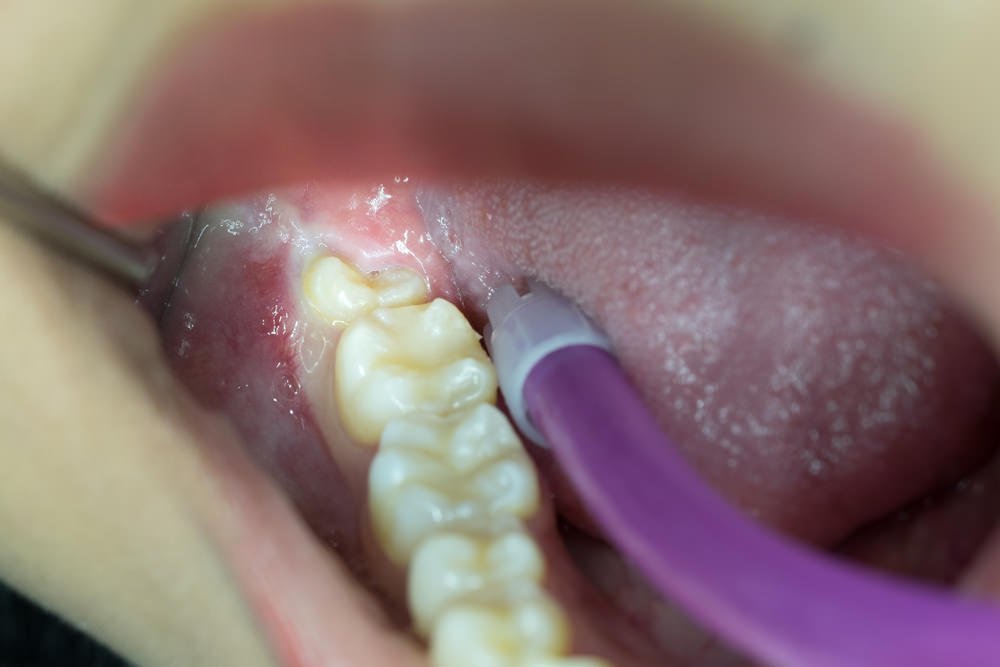
A saliva ejector or suction device that your dentist uses regularly.
5. Dental Drill
This is probably the dental tool most patients are afraid of; this is mainly because of the high pitch noise or the vibration of the slow speed.
But it’s important, as it is the most effective way a dentist can remove decay from a tooth before filling a cavity.
The high-speed drill spins at over 250,000rpm while it shoots water into your mouth, so it doesn’t overheat and damage your tooth.
You may feel uncomfortable due to the water coolant or as it vibrates on your teeth, but generally, it doesn’t hurt, as you will get a local anesthetic beforehand.
The main issue is the sense of vibration, noise or water spray which most people are not used to in their mouth.
Knowing what to expect and knowing that you can control and stop the procedure at any time can help a patient to feel at ease. The sense of “loss of control” can be overwhelming.
This is important to discuss with the dentist beforehand and knowing that your dentist will stop at your request is important to feel at ease during the procedure.
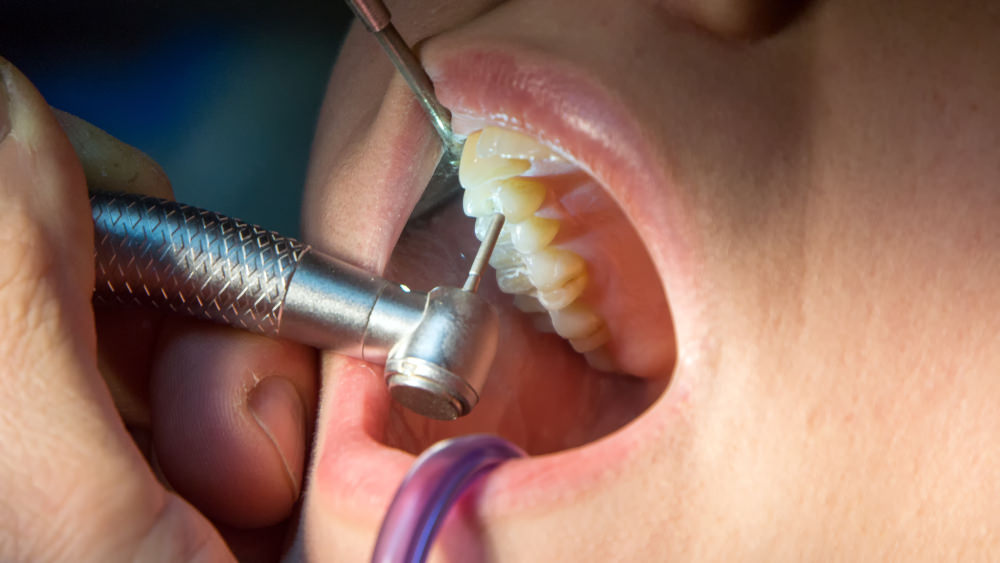
A dental drill – The most effective way a dentist can remove decay from a tooth before filling a cavity.
6. Dental Syringe
On that note, the dental syringe is what gives your mouth the numbing sensation from the anesthetic.
The syringe is an instrument that holds the sterile cartridge which comes from a sterile bubble wrapping and is inserted into the syringe to deliver the solution into the gums and cheeks.
A dental syringe is a bit longer than your usual needle or syringe, so the dentist can be sure to hit the right spot when they administer the anesthetic.
It is merely a delivery system.
You may initially feel a bit of discomfort from the syringe, but it doesn’t take long for this to numb.
Many dentists will also apply a topical anesthetic before they use the syringe, to reduce any pain felt by the prick of the anesthetic.
Either way, if you picture an ice cube in your mouth.
This picture will lessen your anxiety about the numbness, especially with children.
Having a picture in your mind which is non-threatening makes the procedure more comfortable
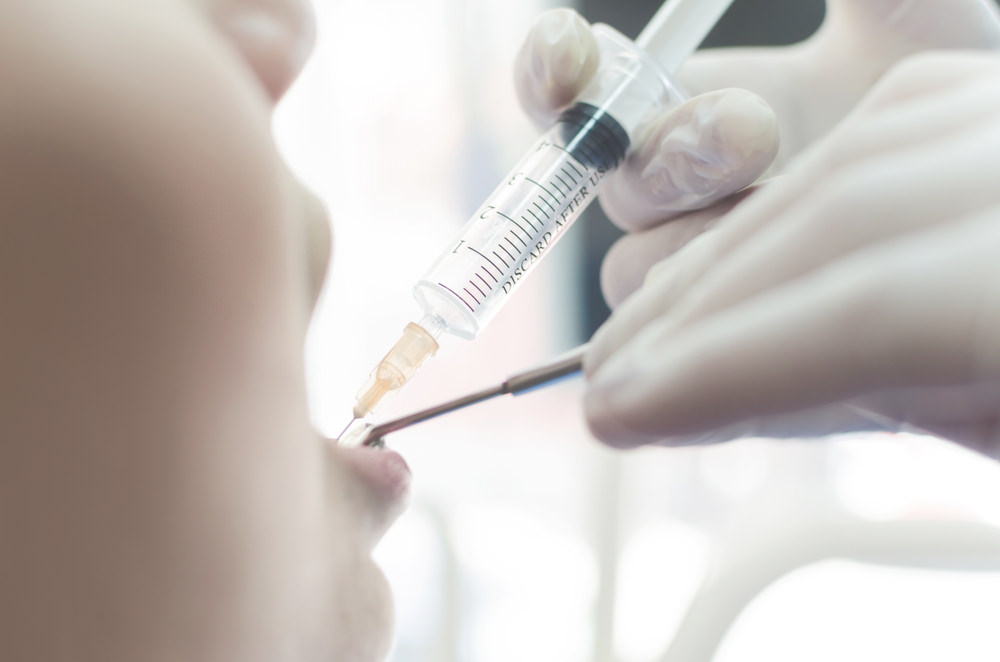
A Dental syringe used by your dentist.
7. Moulds or Models
If getting a crown, cap, or mouthguard made, or study models; your dentist may have to get a mould called a model of your teeth.
A model is made with an “impression” which is a tray filled with a soft moulding material that we insertion in your mouth.
The dentist will hold this tray in your mouth until the material sets.
As it sets it is able to be removed from the mouth giving the dentist a “model” of your teeth so that the dentist can study it and/or make restoration or a functional appliance to fit your teeth in the laboratory.
The material doesn’t taste fantastic, but it’s nothing you can’t endure for a few minutes.
Some dentists even have flavoured options available for children.
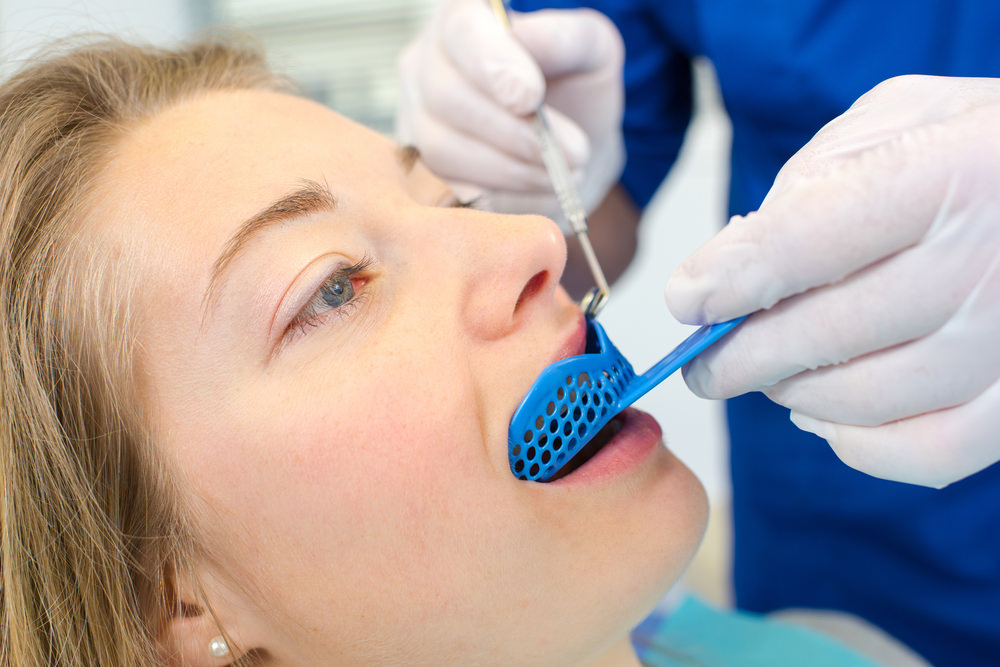
A mouth tray that is used to take a model of your teeth.
How Are Dental Instruments cleaned and Sterilised?
Along with all other medical practices, a dental clinic must strictly comply with the standard cleanliness criteria.
Infection control procedures must be fully employed, so that patient safety is maintained.
Essentially, sterilisation in dentistry comprises traditional practices and policies in order to keep all dental instruments clean and free from spreading any potential infections.
So, how exactly is this done?
Firstly, in dentistry, sterilisation involves a lot more than washing and cleaning.
All dentists, dental hygienists, and staff assistants, as part of their ongoing professional practice, are obligated to undertake compulsory training for dental sterilisation.
Now, the practice of sterilisation itself involves assorted functions, predominantly concerning preventing and controlling the infection.
An infection control protocol is established to ensure the patients a safe and effective dental treatment.
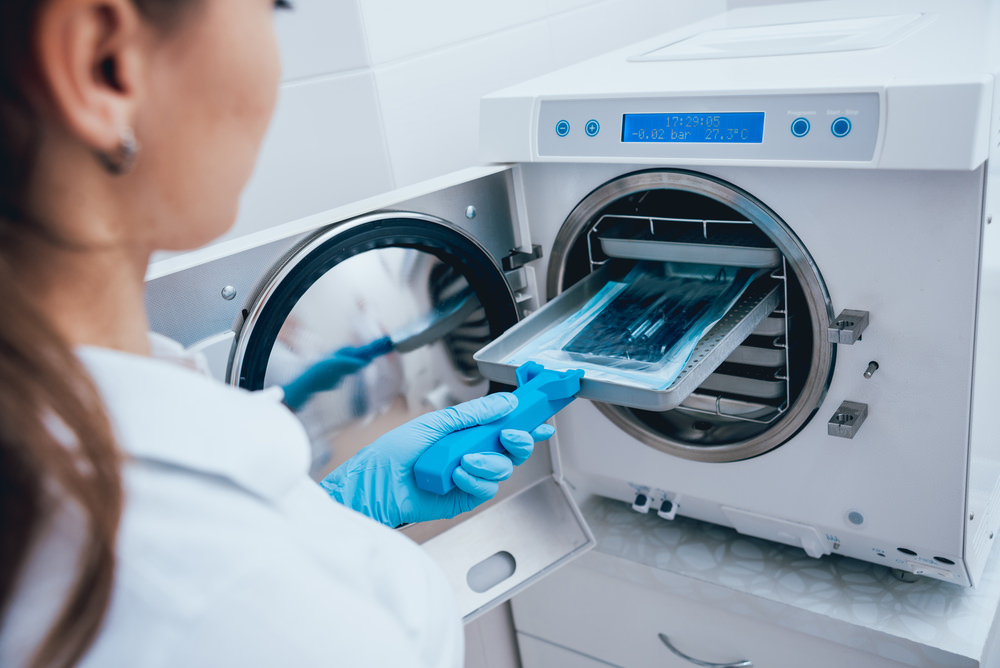
A dental assistant sterilising dental instruments.
While a lot of instruments can be replaced immediately every time they are used, others are reusable.
They are divided into three different groups, and only the right ones can be reused.
The groups and the way they are taken care of are:
1. Critical
Those that touch bones and soft tissues such as scalers, are firstly washed and all debris removed.
Then they are placed into an ultrasonic vibrational machine which further removes debris.
Then the instruments are dried and “bagged” with an indicator on the bag which changes colour when a certain high temperature is used in the sterilizer.
The autoclave is the sterilizer that reaches high temperature and pressure.
2. Semi-critical
Those that come into contact with oral tissues but do not penetrate it, such as mouth mirrors, should also be sterilised after each use.
Though in cases where sterilisation is not practicable, a high-level “sterilant” disinfection is suitable.
3. Non-critical
Those that do not penetrate even these are either thrown away as a single-use or sterilized.
We do not use any other means but the highest level of cleaning and sterilizing every instrument which comes in contact with a patient.
So, to sum it up, semi-critical and critical tools must be sterilised between usage or they are thrown away.
Each surface that can transmit germs from one patient to another is covered by a plastic sheet and thrown away after each patient.
The chair and any surrounding surface is then cleaned using ozone or a high level antibacterial agent.
Why so?
Your mouth is a breeding ground for many different types of bacteria.
So, those that are reusable must be sterilised after every single patient – because they touch the mouth, sterilisation guarantees that microorganisms don’t transfer from the mouth of one patient to the next.
This means that the dentist or staff have ensured the risk for transmission between patients is as eradicated, as they have destroyed all microbial life as much as is physically possible.
A dentist or one of their staff can be trusted to sterilise the dental as the staff is trained to the highest calibre when dealing with the health of their patients.
After each dental treatment, dental assistants normally gather the instruments and clean them according to guidelines.
This is one of the most critical jobs performed by a dental assistant.
It’s also up to the dentist, however, to ensure these procedures are carried out and are safe.
The training that each hygienist and dentist has undergone puts in place procedures that are foolproof and safe.
It is also necessary the dental professional know the:
- The frequency with which the tools are sanitised. This is done by having logs and procedures in place which records every single instrument that is used on patients. Using bar cones and autoclave records.
- Basic safety protocols to follow to ensure any items used have been thoroughly sanitised prior to placing them in a patient’s mouth. Tests are used daily on the autoclave and safety servicing and maintenance records are used.
- Sterilisation cycle – that is, the prearranged sequence to clean the instruments, dictating the manner of how sterilisation occurs, the number of loads, how much was bacteria removed, everything is checked and double-checked so that errors do not occur.
How Much Do Common Dental Instruments Cost?
Ever wondered why your dental treatment is so expensive?
Well, specialised dental instruments are expensive.
Your dentist needs to set up their clinic by purchasing these products.
Let’s give you an overview of the price of just some of the common dental tools and other items you’ll be aware of:
- Mouth mirror = $1.50 – $5.50 each.
- Sickle probe = $8.50 – $16.50.
- Scaler = $36 – $44.
- Saliva injector (suction device) = $389 – $699.
- Dental drill = Roughly $1000 – $2500 for the handpiece, and another $115 – $250 for the fibre posts and drill pieces themselves.
- Dental syringe = $40 for a box of 100 (that’s without the solution).
- X-ray apron = $629.
- Anti-fog safety goggles = $9.90 – $27.50.
- Hospital grade disinfectant (5L bottle) = $48.20 – $69.50.
Why Do They Cost So Much?
They are costly, but a dentist must invest in high-quality dental instruments are the procedures for sterilization are harsh and could damage inferior materials.
This is an essential part of setting up a dental clinic, so a successful practice is sustained.
The benefits of these costly but quality dental instruments include that they:
- Are made from strong materials, such as stainless steel, which is durable. Meaning, it will hold up against being used every day.
- Will not bend or break. If an instrument breaks when needed during a procedure, the time a patient waits could be longer, creating irritatingly long delays. Constantly repairing or maintaining instruments could lead to longer wait times for even people in the waiting room.
- Will be manufactured precisely, be hygienic, and resist corrosion.
- Are long-lasting. Less expensive, lower quality tools, such as scalers, generally need to be sharpened more frequently, which can shorten their lifespan. So high-quality dental instruments, though initially more costly, are most cost-effective in the long run.
- Allow the Dentist to provide more accurate precision and skill, as they are ergonomically designed, so fit their hand better, needless force, and feel lighter and more evenly balanced. This could even help reduce common workplace injuries, like neck and back problems, or hand injuries.
- Can be found easier to be used in more complicated procedures.
Are Dental Instruments Governed By a Body?
Simply put, yes.
As seen in this paper by the Australian Dental Industry Association, under Australian law, most types of dental equipment and consumables are classified as “medical devices”.
As such, they need to be supplied in accord with the agenda that was established by the Therapeutic Goods Act (Cth) 1989.
So, simply put, the guidelines for the dental instruments are set by the TGA.
This regulates the quality, safety, and performance of all “medical devices” (that is, dental instruments), that are manufactured, imported, or supplied in Australia
Conclusion
Now you know more about the common tools used in dental procedures, hopefully, you aren’t scared to enter the dental clinic.
In the hands of a trained professional, these instruments are advantageous when used in the manner that they are designed.
They are for your safety.
Even the scary looking ones, like the syringes, are there to make you feel more comfortable.
If you’re still scared, you can read our post, “How to Prevent Panic Attacks at the Dentist”.
Or you can go on to learn about other, less common, dental instruments, at Wikipedia.
What dental instrument makes you feel uncomfortable?
By Dr. V
Created at November 03, 2021, Updated at January 25, 2025


